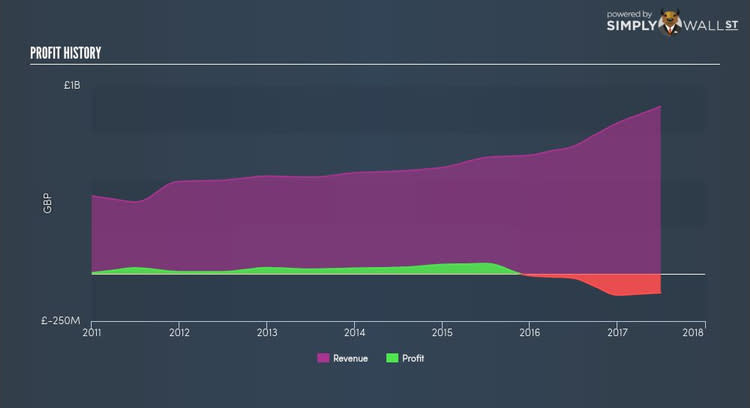Laird PLC (LSE:LRD): What Does It Mean For Your Portfolio?

If you are a shareholder in Laird PLC’s (LSE:LRD), or are thinking about investing in the company, knowing how it contributes to the risk and reward profile of your portfolio is important. The beta measures LRD’s exposure to the wider market risk, which reflects changes in economic and political factors. Different characteristics of a stock expose it to various levels of market risk, and the broad market index represents a beta value of one. Any stock with a beta of greater than one is considered more volatile than the market, and those with a beta less than one is generally less volatile.
View our latest analysis for Laird
An interpretation of LRD's beta
Laird’s beta of 0.36 indicates that the company is less volatile relative to the diversified market portfolio. This means the stock is more defensive against the ups and downs of a stock market, moving by less than the entire market index in times of change. Based on this beta value, LRD appears to be a stock that an investor with a high-beta portfolio would look for to reduce risk exposure to the market.
Does LRD's size and industry impact the expected beta?
A market capitalisation of GBP £708.36M puts LRD in the category of small-cap stocks, which tends to possess higher beta than larger companies. In addition to size, LRD also operates in the electronic equipment, instruments and components industry, which has commonly demonstrated strong reactions to market-wide shocks. Therefore, investors may expect high beta associated with small companies, as well as those operating in the electronic equipment, instruments and components industry, relative to those more well-established firms in a more defensive industry. This is an interesting conclusion, since both LRD’s size and industry indicates the stock should have a higher beta than it currently has. A potential driver of this variance can be a fundamental factor, which we will take a look at next.
How LRD's assets could affect its beta
An asset-heavy company tends to have a higher beta because the risk associated with running fixed assets during a downturn is highly expensive. I examine LRD’s ratio of fixed assets to total assets to see whether the company is highly exposed to the risk of this type of constraint. Considering fixed assets account for less than a third of the company's overall assets, LRD seems to have a smaller dependency on fixed costs to generate revenue. Thus, we can expect LRD to be more stable in the face of market movements, relative to its peers of similar size but with a higher portion of fixed assets on their books. Similarly, LRD’s beta value conveys the same message.
What this means for you:
Are you a shareholder? You may reap the benefit of muted movements during times of economic decline by holding onto LRD. Its low fixed cost also means that, in terms of operating leverage, its costs are relatively malleable to preserve margins. I recommend analysing the stock in terms of your current portfolio composition before increasing your exposure to the stock.
Are you a potential investor? You should consider the stock in terms of your portfolio. It could be a valuable addition in times of an economic decline, due to its low fixed cost and low beta. However, I recommend you to also look at its fundamental factors as well, such as its current valuation and financial health to assess its investment thesis in further detail.
Beta is one aspect of your portfolio construction to consider when holding or entering into a stock. But it is certainly not the only factor. Take a look at our most recent infographic report on Laird for a more in-depth analysis of the stock to help you make a well-informed investment decision. But if you are not interested in Laird anymore, you can use our free platform to see my list of over 50 other stocks with a high growth potential.
To help readers see pass the short term volatility of the financial market, we aim to bring you a long-term focused research analysis purely driven by fundamental data. Note that our analysis does not factor in the latest price sensitive company announcements.
The author is an independent contributor and at the time of publication had no position in the stocks mentioned.

